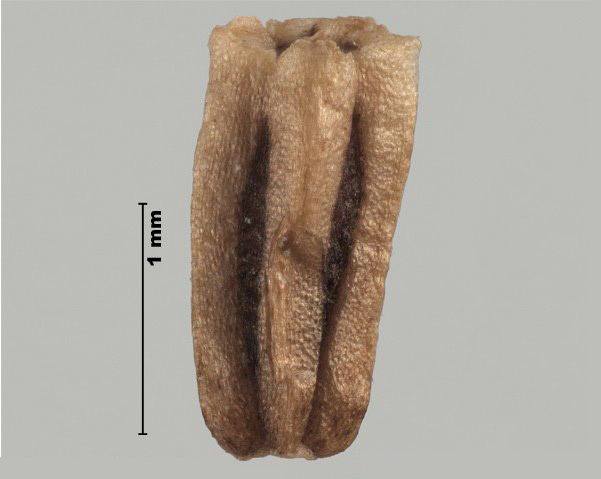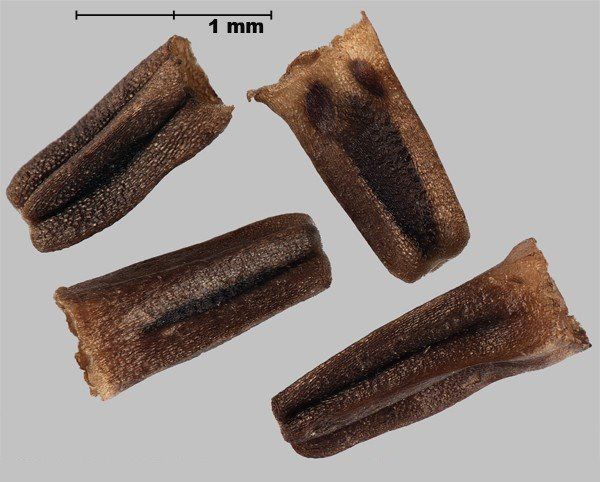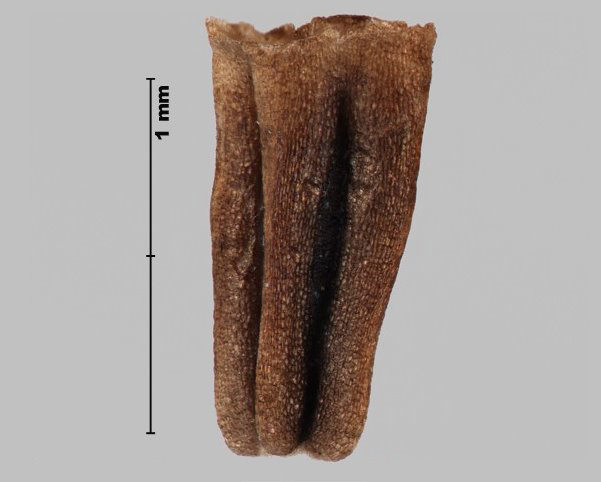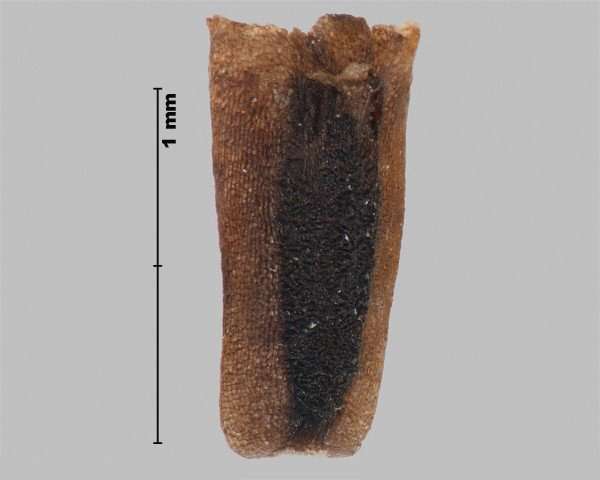Family
Asteraceae
Common Name
Scentless chamomile
Regulation
Secondary Noxious, Class 3 and Noxious, Class 5 in the Canadian Weed Seeds Order, 2016 under the Seeds Act.
Distribution
Canadian: Occurs in throughout Canada except in NU (Brouillet et al. 2016Footnote 1).
Worldwide: Native to Europe and temperate Asia and introduced in North and South America, the Azores, Poland, Russian Federation (Primorye), and New Zealand (USDA-ARS 2016Footnote 2). In the United States, widespread in the north but absent from much of the south (USDA-NRCS 2016Footnote 3).
Duration of Life Cycle
Annual to short-lived perennial
Seed or Fruit Type
Achene
Identification Features
Size
- Achene length: 1.7 - 3.1 mm
- Achene width: 0.7 - 1.6 mm
Shape
- Rectangular-shaped achene
Surface Texture
- Three ribs are on one side, and no ribs on other side of achene
- Surface is transversely wrinkled between ribs
Colour
- Ribs are light to medium brown, dark brown between ribs, resin glands are reddish
Other Features
- Achene has 2 ends: top has a small style peg surrounded by a jagged rim, while bottom has a small ring
- Two resin glands are at top of achene on side without ribs
- Resin glands usually round and reddish
- Resin glands can also be seen looking down from top of achene
Habitat and Crop Association
Cultivated fields, old fields, pastures, hay fields, farm yards, fencelines, gardens, lawns, ditches, roadsides, railway lines and disturbed areas (Woo et al. 1991Footnote 4, Darbyshire 2003Footnote 5).
General Information
Scentless chamomile was recorded in Canada in the late 1800s and is believed to have arrived in ship ballast, as a garden plant, and as a seed contaminant from Europe (Woo et al. 1991Footnote 4).
Dense stands of scentless chamomile have approximately 3200 flower heads and may produce up to 1.8 million achenes per square meter (Woo et al. 1991Footnote 4). These achenes can remain viable in the soil for up to about 10 years (Woo et al. 1991Footnote 4).
Similar Species
False mayweed (Tripleurospermum maritimum)
- False mayweed achenes are a similar size, brown colour, and rectangular shape as scentless chamomile. The rib arrangement and the resin glands are also similar to scentless chamomile.
- False mayweed achenes usually have less space between the ribs, the resin glands cannot be seen from the top of the achene, and the resin glands are often brown and oval rather than round and reddish compared to scentless chamomile.
Photos





Similar species


